This article has multiple issues. Please help improve it or discuss these issues on the talk page. (Learn how and when to remove these template messages)
(Learn how and when to remove this template message)
|
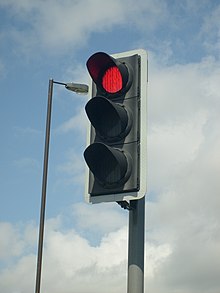

Traffic lights, also known as traffic signals, traffic lamps, traffic semaphore, signal lights, stop lights, robots (in South Africa and most of Africa), and traffic control signals (in technical parlance), are signalling devices positioned at road intersections, pedestrian crossings, and other locations to control flows of traffic.
The world's first traffic light was short lived. It was a manually operated gas-lit signal installed in London in December 1868. It exploded less than a month after it was implemented, injuring its policeman operator. Traffic control started to seem necessary in the late 1890s and Earnest Sirrine from Chicago patented the first automated traffic control system in 1910. It used the words "STOP" and "PROCEED", although neither word lit up.
Traffic lights alternate the right of way accorded to users by displaying lights of a standard colour (red, amber (yellow), and green) following a universal colour code. In the typical sequence of colour phases:
- The green light allows traffic to proceed in the direction denoted, if it is safe to do so and there is room on the other side of the intersection.
- The amber (yellow) light warns that the signal is about to change to red. In a number of countries – among them the United Kingdom – a phase during which red and yellow are displayed together indicates that the signal is about to change to green. Actions required by drivers on a yellow light vary, with some jurisdictions requiring drivers to stop if it is safe to do so, and others allowing drivers to go through the intersection if safe to do so.
- A flashing amber indication is a warning signal. In the United Kingdom, a flashing amber light is used only at pelican crossings, in place of the combined red–amber signal, and indicates that drivers may pass if no pedestrians are on the crossing.
- The red signal prohibits any traffic from proceeding.
- A flashing red indication is treated as a stop sign.
In some countries traffic signals will go into a flashing mode if the conflict monitor detects a problem, such as a fault that tries to display green lights to conflicting traffic. The signal may display flashing yellow to the main road and flashing red to the side road, or flashing red in all directions. Flashing operation can also be used during times of day when traffic is light, such as late at night.
Contents
History
Before traffic lights, traffic police controlled the flow of traffic. A well-documented example is that on London Bridge in 1722.:3 Three men were given the task of directing traffic coming in and out of either London or Southwark. Each officer would help direct traffic coming out of Southwark into London and he made sure all traffic stayed on the west end of the bridge. A second officer would direct traffic on the east end of the bridge to control the flow of people leaving London and going into Southwark.
On 9 December 1868, the first non-electric gas-lit traffic lights were installed outside the Houses of Parliament in London to control the traffic in Bridge Street, Great George Street, and Parliament Street. They were proposed by the railway engineer J. P. Knight of Nottingham who had adapted this idea from his design of railway signalling systems and constructed by the railway signal engineers of Saxby & Farmer. The main reason for the traffic light was that there was an overflow of horse-drawn traffic over Westminster Bridge which forced thousands of pedestrians to walk next to the Houses of Parliament. The design combined three semaphore arms with red and green gas lamps for night-time use, on a pillar, operated by a police constable. The gas lantern was manually turned by a traffic police officer with a lever at its base so that the appropriate light faced traffic. The signal was 22 feet (6.7 m) high. The light was called the semaphore and had arms that would extend horizontally that commanded drivers to "Stop" and then the arms would lower to a 45 degrees angle to tell drivers to proceed with "Caution". At night a red light would command "Stop" and a green light would mean use "Caution".
Although it was said to be successful at controlling traffic, its operational life was brief. It exploded on 2 January 1869 as a result of a leak in one of the gas lines underneath the pavement and injured the policeman who was operating it.
In the first two decades of the 20th century, semaphore traffic signals like the one in London were in use all over the United States with each state having its own design of the device. One example was from Toledo, Ohio in 1908. The words "Stop" and "Go" were in white on a green background and the lights had red and green lenses illuminated by kerosene lamps for night travelers and the arms were 8 feet (2.4 m) above ground.:22 It was controlled by a traffic officer who would blow a whistle before changing the commands on this signal to help alert travelers of the change. The design was also used in Philadelphia and Detroit.:23 The example in Ohio was the first time America tried to use a more visible form of traffic control that evolved the use of semaphore. The device that was used in Ohio was designed based on the use of railroad signals.
In 1912, a traffic control device was placed on top a tower in Paris at the Rue Montmartre and Grande Boulevard. This tower signal was manned by a police woman and she operated a revolving four-sided metal box on top of a glass showcase where the word "Stop" was painted in red and the word "Go" painted in white.:33
An electric traffic light was developed in 1912 by Lester Wire, a policeman in Salt Lake City, Utah, who also used red-green lights. On 5 August 1914, the American Traffic Signal Company installed a traffic signal system on the corner of East 105th Street and Euclid Avenue in Cleveland, Ohio.:27–28 It had two colours, red and green, and a buzzer, based on the design of James Hoge, to provide a warning for colour changes. The design by James Hoge allowed police and fire stations to control the signals in case of emergency. The first four-way, three-colour traffic light was created by police officer William Potts in Detroit, Michigan in 1920. Ashville, Ohio claims to be the home of the oldest working traffic light in the United States, used at an intersection of public roads from 1932 to 1982 when it was moved to a local museum. Many pictures of historical traffic lights appear at a Traffic Signal Trivia page.
The tower was the first innovation that used the three-coloured traffic signal and appeared first in the City of Detroit, where the first three-coloured traffic light was built at the intersection of Michigan and Woodward Avenues in 1920. The man behind this three-colour traffic light was police officer William Potts of Detroit. He was concerned about how police officers at four different lights signals could not change their lights all at the same time. The answer was a third light that was coloured amber, which was the same colour used on the railroad.:93 Potts also placed a timer with the light to help coordinate a four-way set of lights in the city. The traffic tower soon used twelve floodlights to control traffic and the reason for a tower in the first place was that at the time the intersection was one of the busiest in the world, with over 20,000 vehicles daily.:35
Los Angeles installed its first automated traffic signals in October 1920 at five locations on Broadway. These early signals, manufactured by the Acme Traffic Signal Co., paired "Stop" and "Go" semaphore arms with small red and green lights. Bells played the role of today's amber or yellow lights, ringing when the flags changed—a process that took five seconds. By 1923 the city had installed 31 Acme traffic control devices. The Acme semaphore traffic lights were often used in Warner Bros. Looney Tunes and Merrie Melodies cartoons for comedic effect due to their loud bell.
The first interconnected traffic signal system was installed in Salt Lake City in 1917, with six connected intersections controlled simultaneously from a manual switch.:32 Automatic control of interconnected traffic lights was introduced March 1922 in Houston, Texas.
In 1922 traffic towers were beginning to be controlled by automatic timers. The first company to add timers in traffic lights was Crouse Hinds. They built railroad signals and were the first company to place timers in traffic lights in Houston, which was their home city.:385 The main advantage for the use of the timer was that it saved cities money by replacing traffic officers. The city of New York was able to reassign all but 500 of its 6,000 officers working on the traffic squad; this saved the city $12,500,000.:385
After witnessing an accident between an automobile and a horse-drawn carriage, African American inventor, Garrett Morgan, filed a U.S. patent for a traffic signal. Patent No. 1,475,024 was granted on 20 November 1923 for Morgan's three-position traffic signal.
The first traffic lights in Britain were deployed in Piccadilly Circus in 1926. Wolverhampton was the first British town to introduce automated traffic lights in 1927 in Princes Square at the junction of Lichfield Street and Princess Street.
Melbourne was the first city in Australia to install traffic lights in 1928 on the intersection of Collins and Swanston Street.
The twelve-light system did not become available until 1928 and another feature of the light system was that hoods were placed over the light and each lens was sand-blasted to increase daytime visibility.:383
Both the tower and semaphores were phased out by 1930. Towers were too big and obstructed traffic; semaphores were too small and drivers could not see them at night.:382
The first traffic light in South India was installed at Egmore Junction, Chennai in 1953. The city of Bangalore installed its first traffic light at Corporation Circle in 1963.
The control of traffic lights made a big turn with the rise of computers in America in the 1950s. Thanks to computers, the changing of lights made Crosby's flow even quicker thanks to computerized detection. A pressure plate was placed at intersections so once a car was on the plate computers would know that a car was waiting at the red light.:135 Some of this detection included knowing the number of waiting cars against the red light and the length of time waited by the first vehicle at the red.:141 One of the best historical examples of computerized control of lights was in Denver in 1952. One computer took control of 120 lights with six pressure-sensitive detectors measuring inbound and outbound traffic. The system was in place at the central business district, where the most traffic was between the downtown area and the north
Watch movie Traffic Signal online on Amazon
Watch movie Traffic Signal online
Watch The Movie On PrimeLovesongs Yesterday Today and Tomorrow Full HD Movie Download

Majboor Full HD Movie Download
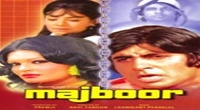
Aakhri Adaalat Full HD Movie Download
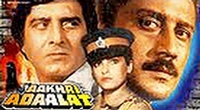
Saamy Full HD Movie Download
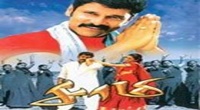
Gentleman Full HD Movie Download

Taal Full HD Movie Download
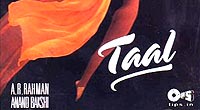
Imaan Full HD Movie Download
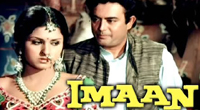
Balwaan Full HD Movie Download
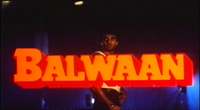
7 Khoon Maaf Full HD Movie Download
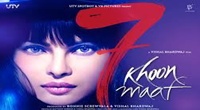
Meri Marzi (2011) Full HD Movie Download
.jpg)
Ram Avtaar Full HD Movie Download
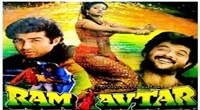
Sasural Full HD Movie Download
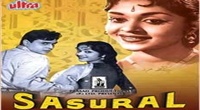
The Great Gatsby Full HD Movie Download
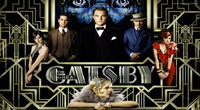
Seetharamakalyanam Full HD Movie Download
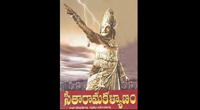
Seeta Ramaiam Gari Manavralu Full HD Movie Download
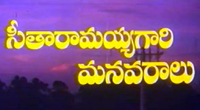
Sri Yedukondala Swamy Full HD Movie Download

Swarga Seema Full HD Movie Download
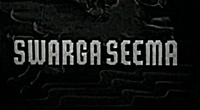
Chal Gajya Karu Majaa Full HD Movie Download

Chottanikkara Amma Full HD Movie Download
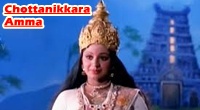
Sharktopus Full HD Movie Download

Mujhse Fraaandship Karoge Full HD Movie Download

Download latest Movie from bollywood
- 1> baaghi 3
- 2> THE SKY IS PINK MOVIE FULL STORY AND REVIEW
- 3> Luka Chuppi
- 4> TO ALL THE BOYS I’VE LOVED BEFORE
- 5> Kabir Singh
- 6> Street Dancer 3D
- 7> Simmba
- 8> Gone Girl
- 9> The Girl Who Lived
- 10> Ludo
- 11> DILWALE DULHANIA LE JAYENGE
- 12> GUILTY
- 13> The Godfather
- 14> Adventures of Rusty
- 15> Sooryavanshi
- 16> Satyameva Jayate 2
- 17> Thappad
- 18> Bhool Bhulaiyaa 2
- 19> KGFChapter 2
- 20> Mardaani 2
- 21> Pinjar
- 22> Shivaji maharaj
- 23> Ek Villian 2
- 24> Hungama 2
- 25> Divergent
- 26> Mumbai Saga
- 27> The Internship
- 28> HIT (telugu)
- 29> Panga
- 30> The perfect date
- 31> 16 December
- 32> Gopala Gopala (Telugu)
- 33> Brahmastra
- 34> Gangubai Kathiawadi
- 35> Manmadhudu
- 36> Nenu local
- 37> Mahanati
- 38> Shatamanam bavathi
- 39> Lagaan
- 40> After
- 41> MOM
- 42> Shamshera
- 43> Raguvaran BTech
- 44> Khakee
- 45> The villain
- 46> OM
- 47> Mr. perfect
- 48> Bueatifull mind
- 49> Hichki
- 50> Gabbar Singh
- 51> Jogi
- 52> Before Sunrise
- 53> Before Sunset
- 54> Before Midnight
- 55> The Big Bull
- 56> Top Gun: Maverick
- 57> The Purge
- 58> The Sky is Pink
- 59> Laxmmi Bomb
- 60> Sadak 2
- 61> Sufna
- 62> Prithviraj
- 63> PK
- 64> Coolie No 1(2020)
- 65> Black Widow
- 66> Dear Zindagi
- 67> Dil Bechara
- 68> PHIR HERA PHERI
- 69> WAR
- 70> Dostana
- 71> RRR: Roudram Ranam Rudhiram
- 72> Maidan
- 73> Dabbang 3
- 74> Chhalaang
- 75> life as we know it
- 76> SherShaah
- 77> Sandeep Aur Pinky Faraar
- 78> Event Horizon
- 79> 83
- 80> Radhe: Your Most Wanted Bhai
- 81> Gunjan Saxena: The Kargil Girl
- 82> Mr India
- 83> Vivah
- 84> Anokha Bandhan
- 85> Ghost
- 86> Bhoot: Part One - The Haunted Ship
- 87> Haseen Dilruba
- 88> Laal Singh Chaddha
- 89> Qismat
- 90> Rajput
- 91> Drive
- 92> Dil Chahta Hai
- 93> Dil Ki Baazi
- 94> Dil Ka Rishta
- 95> Teesri Manzil
- 96> Dil
- 97> Love Aaj Kal
- 98> Khaali Peeli
- 99> Bunty Aur Babli 2
- 100> Atrangi Re
- 101> Gulabo Sitabo
- 102> Jodi
- 103> Suraj Pe Mangal Bhari
- 104> Deewana
- 105> Attack
- 106> Sardar Udham Singh
- 107> Toofan
- 108> THE LOVEBIRDS
- 109> Jersey
- 110> Ginny Weds Sunny
- 111> Thalaivi
- 112> Shiddat
- 113> Angels vs Zombies
- 114> Koi Mil Gya
- 115> Thank God
- 116> Bhuj: The Pride of India
- 117> Hum Aapke Hain Kaun
- 118> The Platform
- 119> Bird Box
- 120> Roohi Afzana
- 121> Torbaaz
- 122> Nikamma
- 123> World War Z
- 124> Extraction
- 125> Train to Busan
- 126> Life of Pi
- 127> SHAADI MEIN JROOR AANA
- 128> Himmat Aur Mehnat
- 129> To All The Boys: P.S. I Still Love You
- 130> Mimi
- 131> Good Newwz
- 132> Shubh Mangal Zyada Saavdhan
- 133> Raabta
- 134> Harry Potter and the Philosopher's Stone
- 135> Harry Potter and the Chamber of Secrets
- 136> Chhapaak
- 137> War of the Worlds
- 138> Harry Potter and the Prisoner of Azkaban
- 139> Harry Potter and the Goblet of Fire
- 140> MURDER MYSTERY
- 141> Shakuntala Devi
- 142> Bachchan Pandey
- 143> Jayeshbhai Jordar
- 144> Sheer Qorma
- 145> Saina
- 146> 'O' Pushpa I hate tears
- 147> Kedarnath
- 148> MS Dhoni The Untold Story
- 149> Chhichhore
- 150> Badhaai Ho
- 151> Unstoppable
- 152> Oz the Great And Powerful
- 153> The Girl on the Train
- 154> Haathi Mere Saathi 2020
- 155> The Conjuring: The Devil Made Me Do It
- 156> Gandhi Se Pehle Gandhi
- 157> The Song of Scorpions
- 158> Srimanthudu
- 159> Hello Guru Prema Kosame
- 160> Beauty and The Beast
- 161> Black Panther
- 162> Charlie and the Chocolate Factory
- 163> Bole Chudiyan
- 164> Fidaa
- 165> Duvvada Jagannadham
- 166> Bruce Lee: The Fighter
- 167> Hyper
- 168> Yaara
- 169> Red (2020)
- 170> Shivam
- 171> That Is Mahalakshmi
- 172> Nishabdham
- 173> Aashram 2020 web series
- 174> Laxmii
- 175> Mismatched
- 176> STUDENT OF THE YEAR 2
- 177> NAIL POLISH
- 178> Ramprasad Ki Tehrvi
- 179> KAAGAZ
- 180> 12 o Clock
- 181> The Power
- 182> bolo hau
- 183> Tribhanga
- 184> JAMUN
- 185> Madam Chief Minister
- 186> Maasaab
- 187> Aadhaar
- 188> Tanhaji
- 189> Bhaagi 3
- 190> Bhootnath
- 191> MALANG
- 192> Jai Mummy Di
- 193> Haathi Mere Saathi 2021
- 194> Shakeela
- 195> Unpaused
- 196> Annayya
- 197> Vamsoddharakudu
- 198> Mrugaraju
- 199> Narasimha Naidu
- 200> Sankranti
- 201> Manasu Maata Vinadhu
- 202> Anjaane
- 203> Apaharan
- 204> Bachke Rehna Re Baba
- 205> Bewafaa
- 206> Roohi
- 207> Radhe
- 208> Zindagi Khoobsoorat Hai
- 209> Yeh Mohabbat Hai
- 210> Yeh Kya Ho Raha Hai?
- 211> The Tomorrow War
- 212> DehradunDiary
- 213> Meri Shaadi Karaoo
- 214> Matruu Ki Bijlee Ka Mandola
- 215> No One Killed Jesica
- 216> Aag Ka Goola
- 217> Eight Million Dollars
- 218> Three Hundred
- 219> Cats and Dog
- 220> Decoy
- 221> Gold Rush
- 222> You Have Got Mail
- 223> Final Destination three
- 224> Tofan
- 225> Jungle
